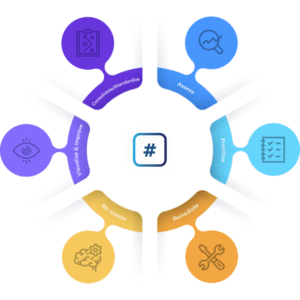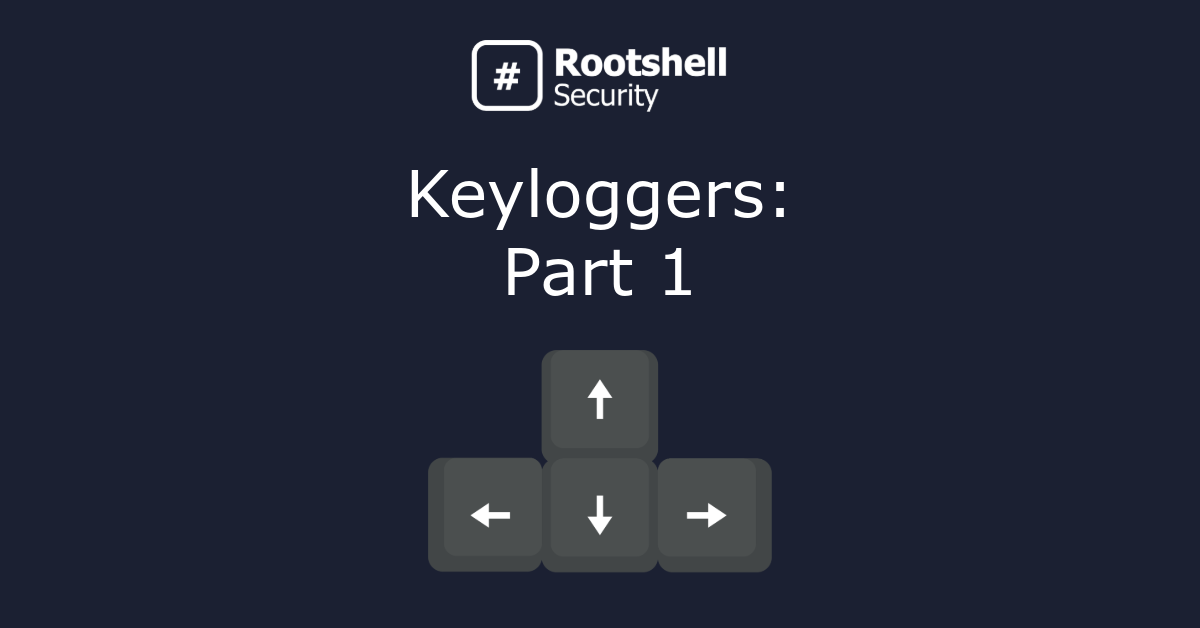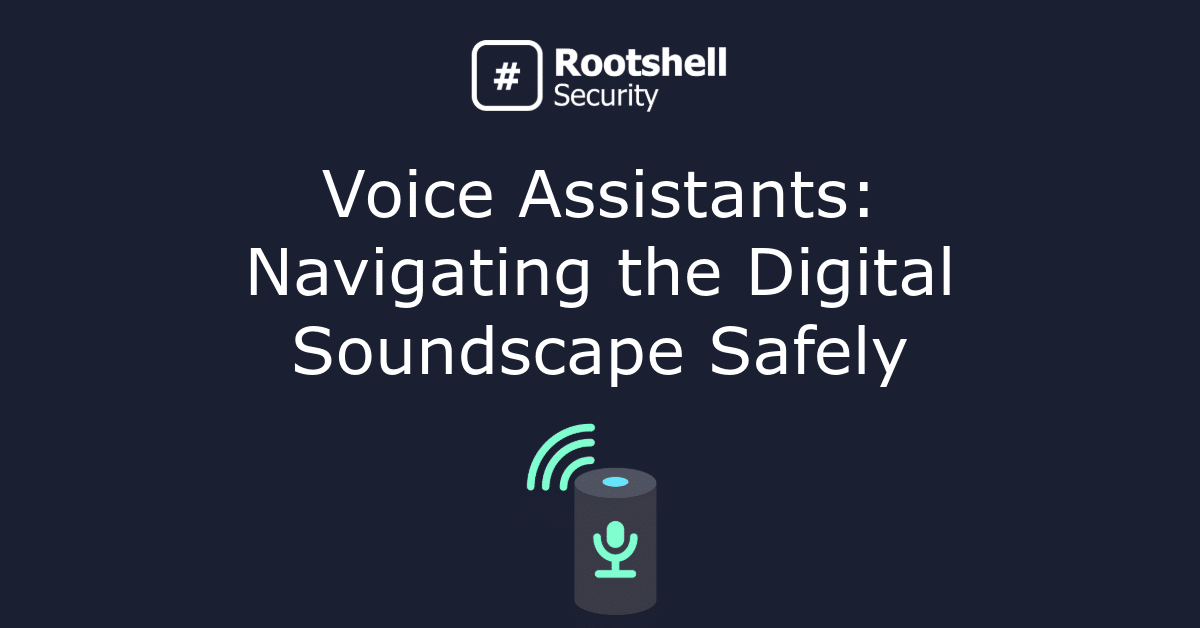In this article:
- Vulnerability management encapsulates the end-to-end process of remediating security vulnerabilities within an organization’s network.
- Vulnerability management solutions like The Rootshell Platform help organizations implement vulnerability management best practices, improving remediation from start to finish.
- Read on for our top five vulnerability management best practices.
What is Vulnerability Management?
Vulnerability management consists of the processes required to resolve weaknesses in an organization’s network.
A vulnerability management program provides IT security teams with a framework for maintaining complete visibility and control of their organization’s security posture, so they can resolve issues as effectively and efficiently as possible.
Ultimately, the goal of vulnerability management is to minimize an organization’s attack surface and reduce risk.

Why is Vulnerability Management Important?
Vulnerability management is an essential part of an organization’s IT security strategy.
Vulnerability management best practices help IT security teams ensure that critical issues are discovered, analysed, and remediated as fast and efficiently as possible. This is critical to preventing cyberattacks, which could have devastating consequences for an organization’s data, personnel, and reputation.
Vulnerability management also helps organizations allocate resources more effectively. Not all security vulnerabilities pose the same risk, and many may not even need to be remediated. Effective vulnerability management provides a framework for security teams to assess and prioritise vulnerabilities, so organizations can ensure that resources are allocated to the most critical issues.
Another reason why vulnerability management is so important is because an organization’s threat landscape is ever-changing. The cyclical process of vulnerability management helps security teams assess and measure their security posture on a continuous basis so that there is very little opportunity for critical issues to be left unaddressed. Read further on the vulnerability management process flow chart.
What is the Vulnerability Management Process?
Vulnerability management starts with the discovery of security issues and concludes with validating whether remediation has been successful, before repeating continuously.
- Discover: Identify threats and vulnerabilities within your organization’s network by carrying out regular penetration tests and vulnerability scans.
- Consolidate: Centralize your threat and vulnerability assessment results in one place. Vulnerability management systems can make this process effortless.
- Assess: Analyse your security issues in line with cyber threat intelligence, such as exploit databases, to establish their severity, the likelihood that they will be exploited, and the impact they could have on your organization.
- Prioritize: Assign severity scores to your assets in line with your analysis, and other factors such as resource availability.
- Remediate: Carry out your threat and vulnerability management program to resolve vulnerabilities in line with your organization’s priorities.
- Re-assess: Verify whether your remediation efforts have been successful. Ultimately, your threat and vulnerability management remediation process should reduce business risk.
- Visualize and improve: Continuously improve your vulnerability management strategy; resolve any bottlenecks and ensure compliance with your organization’s service level agreements. For example, could you reduce your time-to-remediate (TTR)?
5 Vulnerability Management Program Best Practices
Vulnerability management should empower IT security teams to remediate as effectively and efficiently as possible. Consider these vulnerability management best practices when building your program.
1. Continuous Vulnerability Management
Between security assessments, your organization could be at risk. Vulnerability management should be an ongoing process, as new vulnerabilities could emerge at any time, and pre-existing vulnerabilities could become more critical. Read more on Continuous Vulnerability Management.
2. Intelligence-Driven
Threat intelligence enables IT security teams to gain context of their issues, prioritize most effectively, and accurately evaluate risk. A process for gathering and referencing relevant cyber threat intelligence should be integrated with an organization’s vulnerability management life cycle.
3. Streamlined Processes
Bottlenecks within the vulnerability lifecycle can lose you precious time. Processes should be streamlined, empowering teams to address issues fast and efficiently. A vulnerability management system can help improve every aspect of the vulnerability lifecycle, from collaboration to reporting and more.
4. Centralized Data
Vulnerability management can inundate you with data. You may find yourself emailing back and forth with vendors or hunting through PDF reports to find the results you need, which can be incredibly time-consuming. A central hub for your data from different security assessments will save you time, frustration, and put critical information at your fingertips.
5. Effective Prioritization
Risk-based prioritization for your security issues is essential. This process should be clear, consistent, and tailored to your organization’s specific objectives and priorities. Not only is this crucial for keeping your organization safe, but it will also make the best use of your resources.
What Tools Can Help With Vulnerability Management?
A vulnerability management solution could be a software, platform, or application that make it easy for IT security teams to implement vulnerability management program best practices.
For example, a vulnerability management platform could aid in prioritizing, delegating, reporting, tracking, and collaborating on remediation.
The Rootshell Platform is our vendor-agnostic platform that helps you implement a modern vulnerability management program. Its powerful suite of features helps you improve remediation from start to finish.

Vulnerability Management Best Practices With The Rootshell Platform
Here are just some of the ways The Rootshell Platform makes it effortless to implement vulnerability management best practices.
- Centralize security issues: Rootshell is vendor-agnostic, so you can use it to consolidate results from any vulnerability scanner or penetration testing vendor. Managing all your vulnerabilities in one place makes it seamless to continuously analyse, prioritize, and manage all issues across your estate.
- Intelligence-driven prioritization: Rootshell’s industry-leading Daily Exploit Detection alerts you to exploits for your issues on a daily basis, so you can gain the context needed to prioritize most effectively.
- Streamline remediation: The Rootshell Platform modernizes vulnerability management programs and makes it easy for teams to deliver fast and effective remediation, by reducing manual processes, integrating with ticketing systems, and much more.
- Real-time alerts: Rootshell ensures you have real-time insight into your threat landscape, by providing you with live updates from tests and continuous cyber threat intelligence alerts tailored to your digital estate.
Adopt Best Practice Vulnerability Management

We have aligned The Rootshell Platform with the Gartner® Vulnerability Management Cycle to ensure that best practice processes guide your remediation programmes.
Subscribe So You Never Miss an Update




